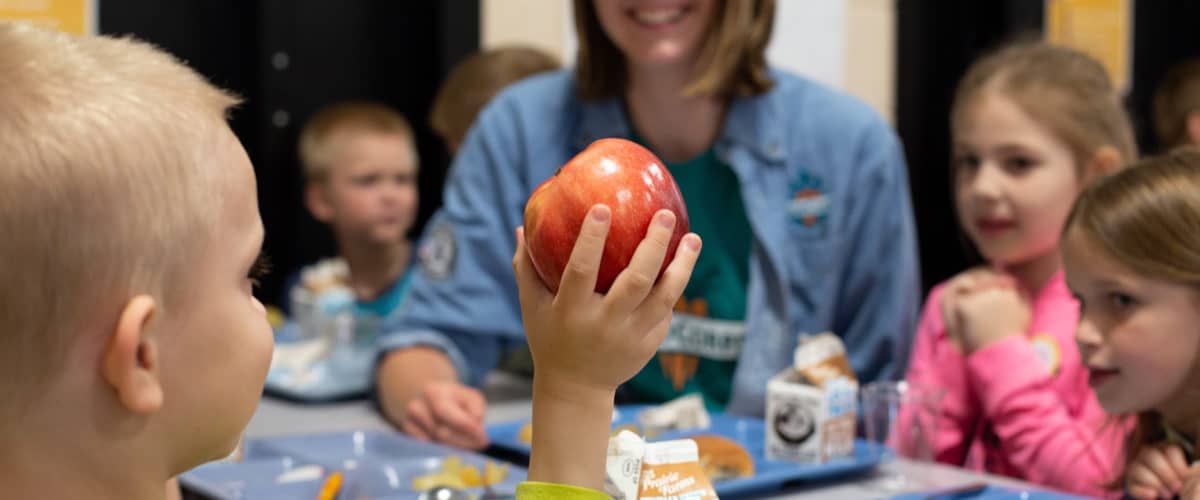This post was last updated April 29, 2021.

If you’re involved in child health in any way, you’ve probably heard the words “child nutrition reauthorization,” or CNR, get tossed around at some point. Advocates in the child nutrition world spend a lot of time focusing on CNR and what it means for school nutrition and student health. So, what is CNR? And more importantly, why should you care?
What is Child Nutrition Reauthorization, anyway?
It sounds like the name of a bill, but CNR is actually a process, not a law-to-be. Child nutrition reauthorization is the process when Congress scrutinizes and updates laws that govern all child nutrition programs. These programs include school lunch and breakfast, summer meals, after-school meals, and more—it’s a pretty big deal.
How often does CNR come up?
The CNR process generally occurs every five years. The last time Congress reauthorized these programs was in 2010, when it passed the Healthy, Hunger-Free Kids Act. Congress started the process in the 2015-2016 session, but it never crossed the finish line, partly due to policy differences between the House and Senate versions of the bill. But unlike some other policies, such as the farm bill, child nutrition programs continue to operate normally even without reauthorization.
In 2019, Congress started hearings on child nutrition. In the House, the Education and Labor Committee has jurisdiction over child nutrition programs and in the Senate, the Agriculture Committee oversees child nutrition programs. Both committees held hearings on child nutrition programs in the early spring. But after the hearings, progress slowed — and the COVID-19 pandemic then consumed attention on the Hill.
Got it. So why should I care about this?
If you care about the health of our kids—particularly kids who face food insecurity, or who disproportionately face the impact of diet-related disease—and you want to see change on a national scale, you should care about this process.
On a normal school day, 30 million kids eat a school lunch. In the 2017 fiscal year, the federal government invested almost $18 billion in school food. And the COVID-19 pandemic has only brought more attention to the vital role schools play in feeding our kids and the need to support and strengthen these programs to recognize that role.
CNR is an opportunity to help make sure more kids, schools, and communities can access healthy, nourishing, and delicious fresh foods, and to make positive changes that push some of the government’s investments in a healthier direction.
What are the prospects for CNR in the future?
Since the pandemic hit, Congress has been focused on COVID relief and, later, a busy election season. However, the opportunity for CNR may be reemerging with the new administration and Congress.
What can I do to support CNR?
We need to continue to advocate for strong nutrition support in future COVID response bills, lay groundwork for policies we want to see incorporated into the next CNR — like the Food and Nutrition Education in Schools Act — and to guard against actions that weaken these vital programs. Keep an eye on our action center for other opportunities to get involved.
FoodCorps is a non-partisan, non-profit organization. FoodCorps staff and FoodCorps AmeriCorps members may not participate in any partisan or seemingly partisan activities during work time charged to a Corporation for National and Community Service funded grant or while earning AmeriCorps service hours. No federal funds were used to prepare or distribute these advocacy actions.
